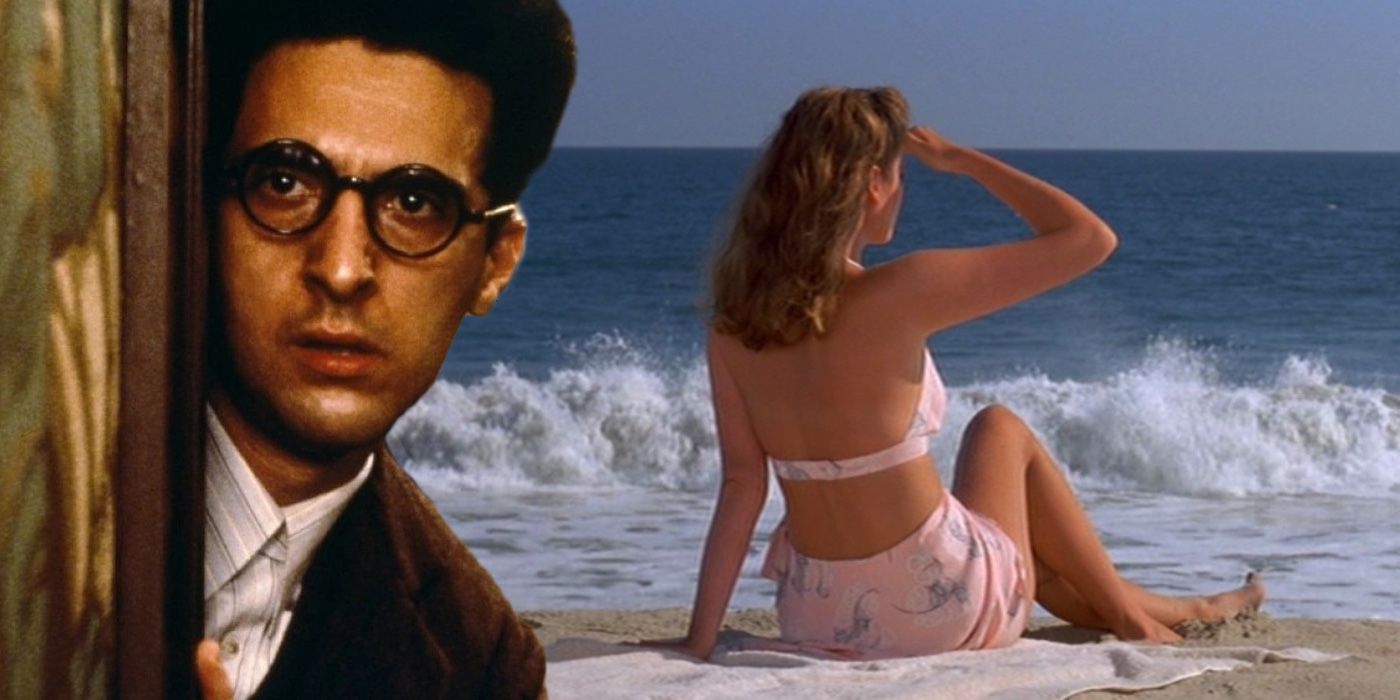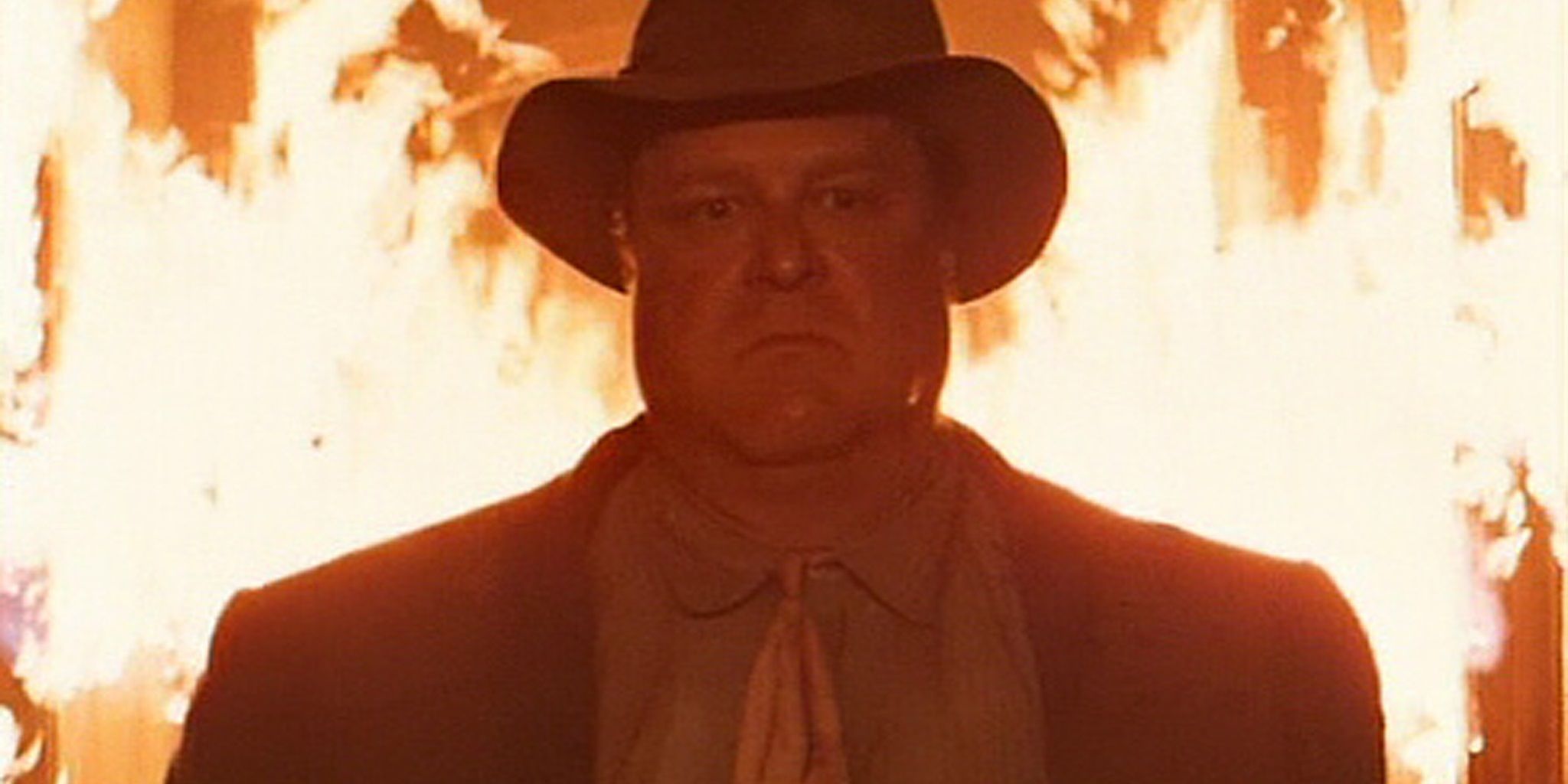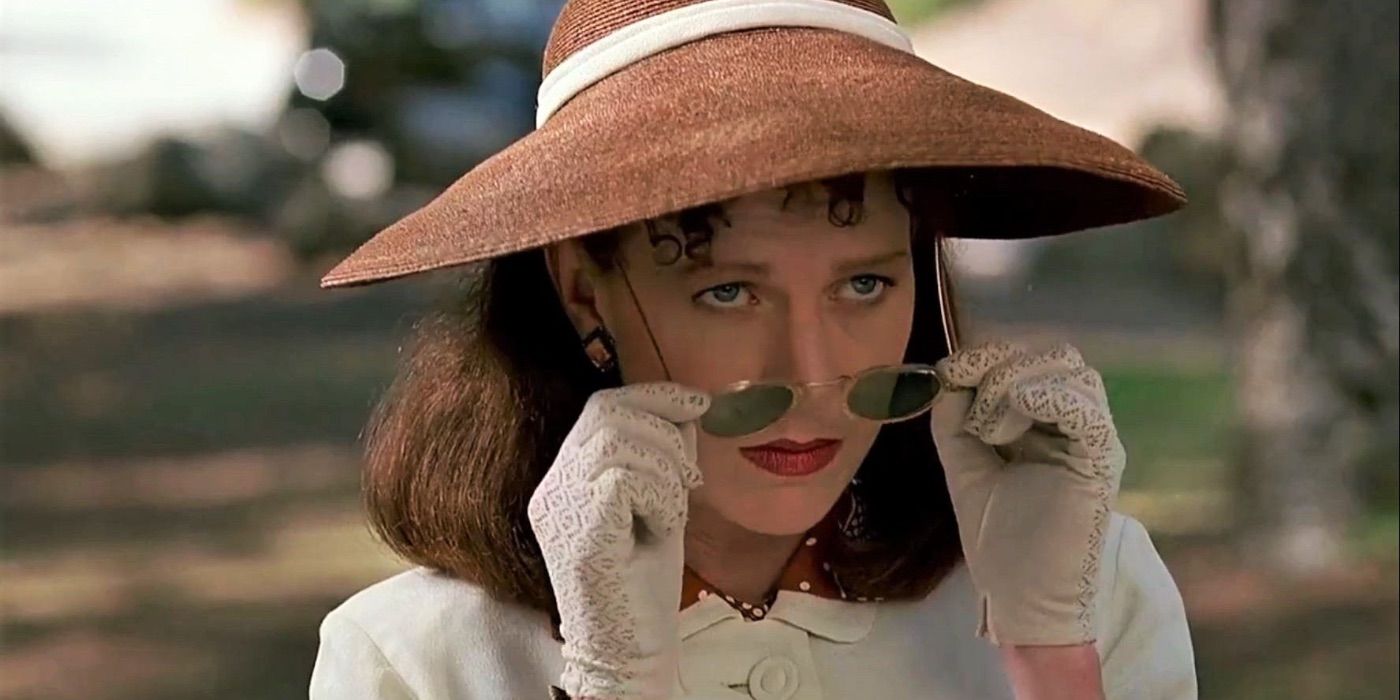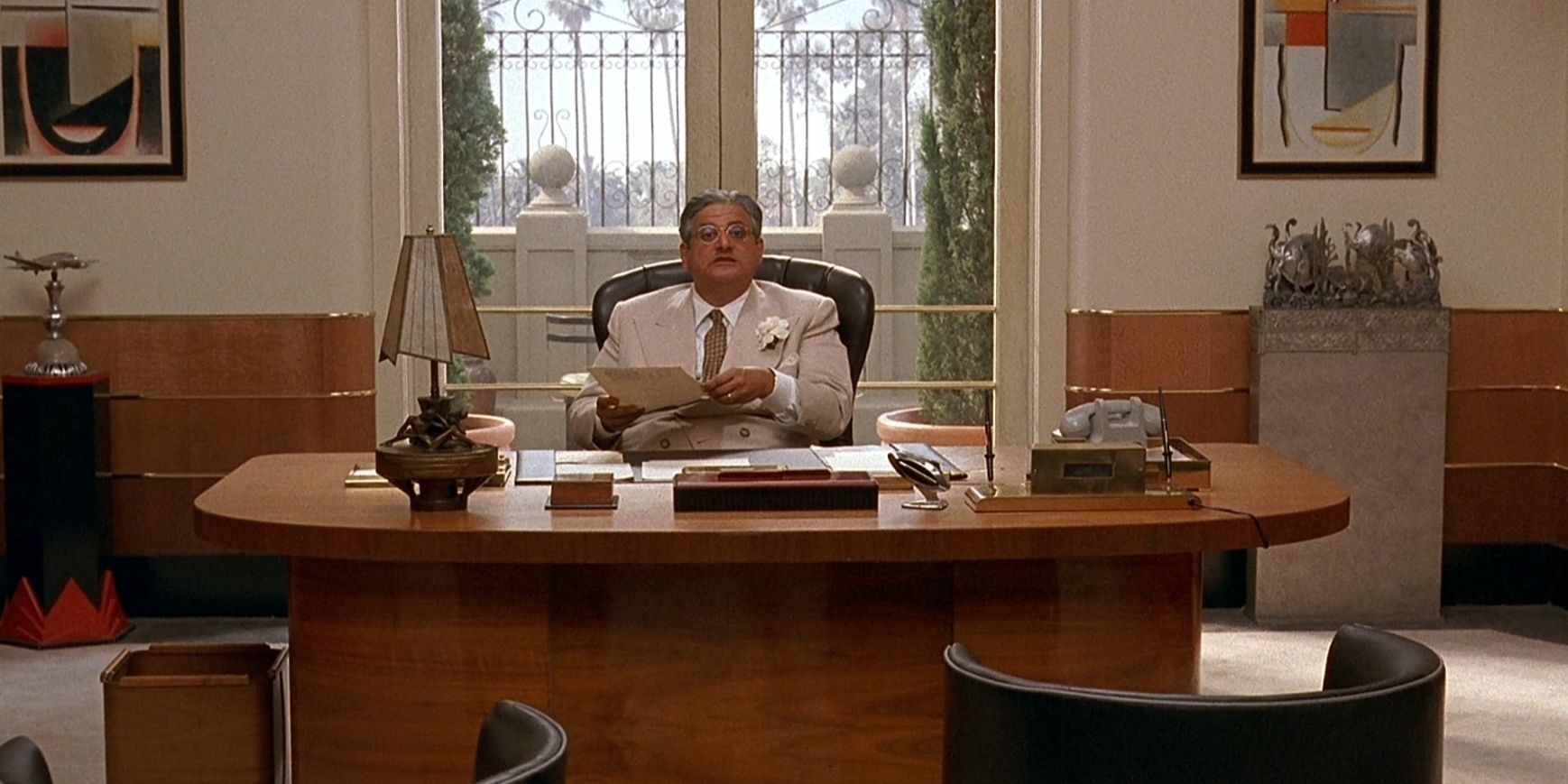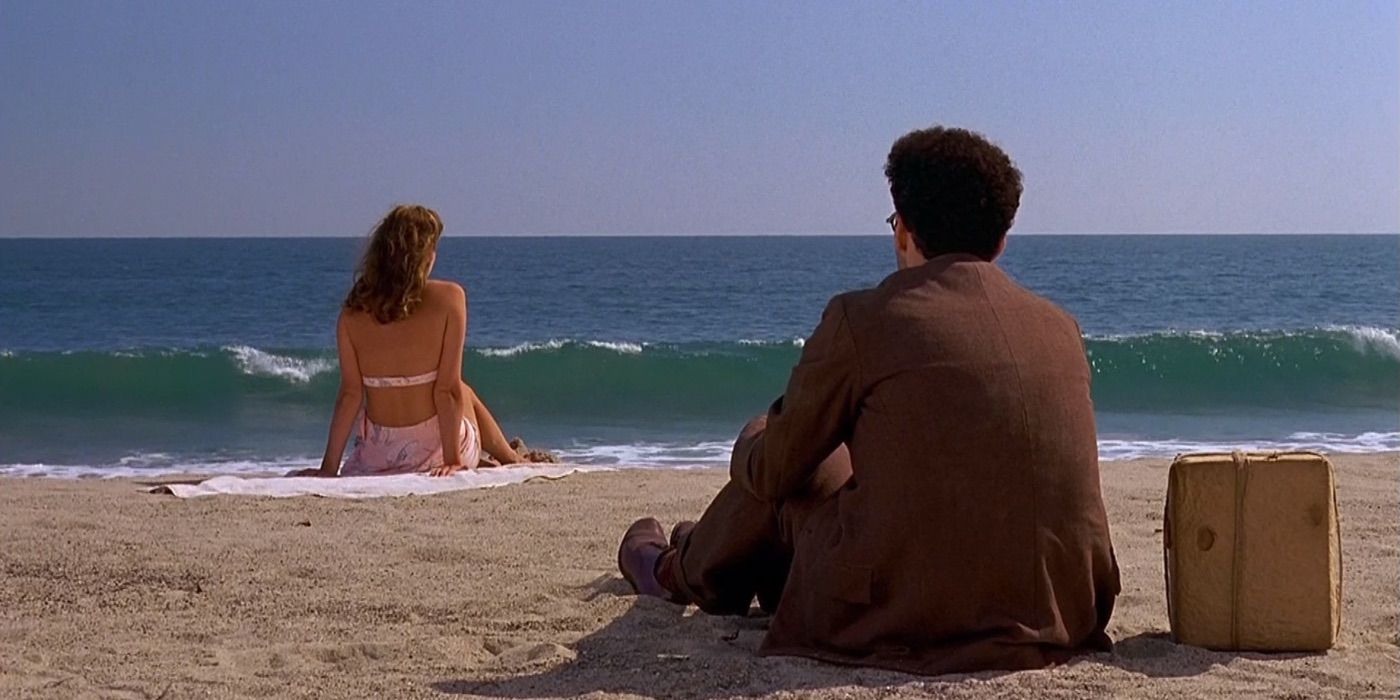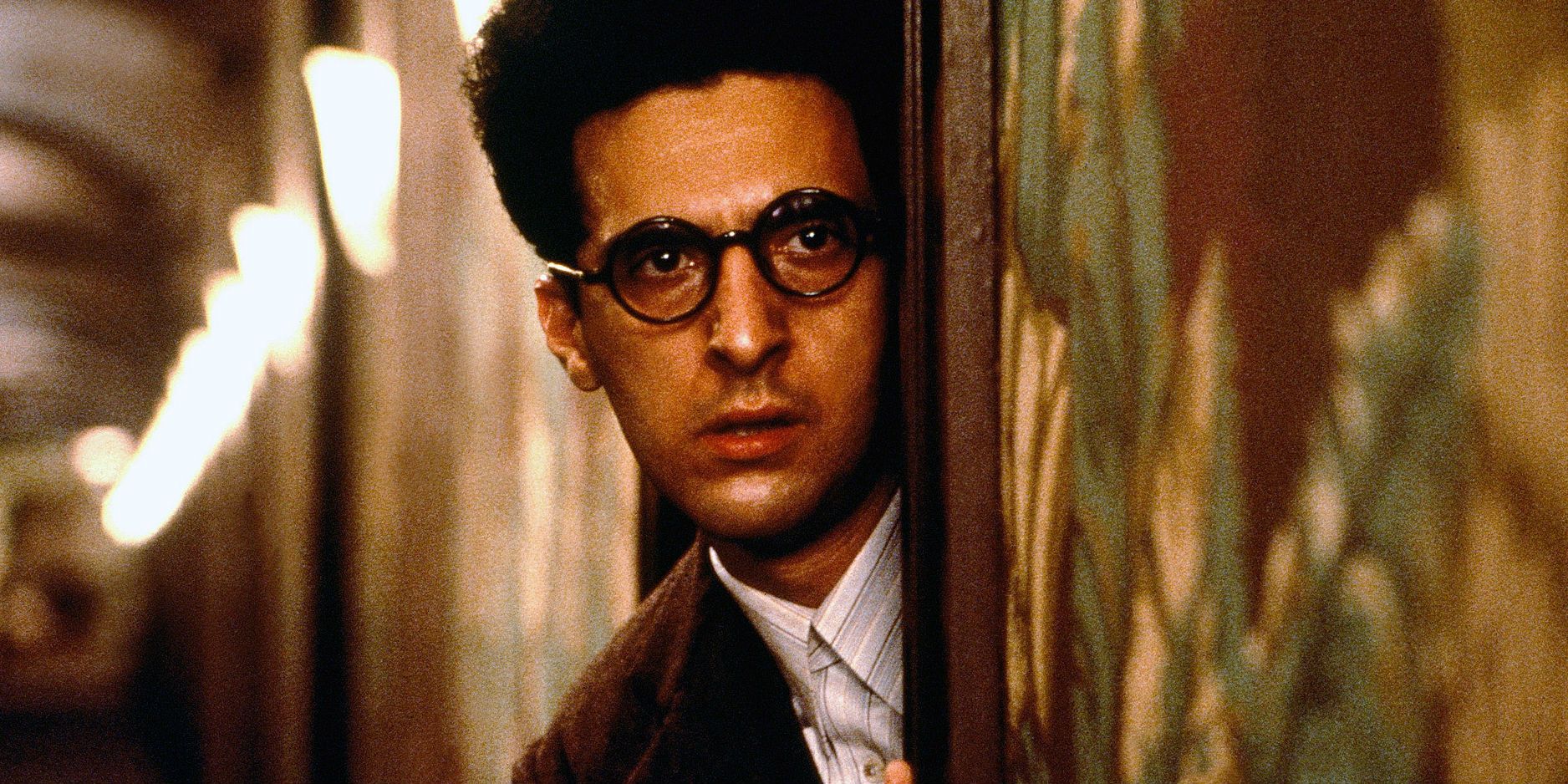Perhaps the Coen brothers' most divisive film, 1991's Barton Fink was stuffed with symbolism and its ending left a lot of questions. Hot on the heels of the Coens' earlier successes like 1987's Raising Arizona, Barton Fink was an analysis of art itself, and the divide between highbrow and lowbrow entertainment. Though it was a financial failure, grossing only $6 million (via Box Office Mojo), it was a critical hit and landed the directing duo the Palme d'Or at the Cannes Film Festival. Though the Coens would create more popular and accessible art in the future, Barton Fink was an undeniable representation of their filmmaking style.
Impossible to fully categorize, Barton Fink was almost defiant in its use of multiple genres to tell its story. Mixing elements of noir, horror, comedy, and drama, the movie was a veritable pastiche of Old Hollywood and cinema itself. Now remembered as the celebrated auteur directors' most underrated movie, Barton Fink was also a bitter look at the Hollywood system and its seeming war on artistic expression. Obviously close to the hearts of its creators, the movie had just as many themes as it did genres, and it positioned itself as a puzzle to be solved on top of being an entertaining experience.
What Happens In Barton Fink's Ending?
With everything crashing down around him and with his deadline looming, Barton Fink (John Turturro) was suddenly hit with a wave of inspiration following the knowledge that the package left for him by Karl Mundt (John Goodman) possibly contained a severed head. Fink then spent a night on the town to celebrate his finished script draft before returning to his room to find the detectives were once again back to question him. The murder of W.P. Mayhew (John Mahoney) let Fink and the detectives know that Mundt, one of the Coens' most dangerous villains, was back in Los Angeles, and they suspected Fink was his accomplice.
Suddenly, the building was engulfed in flame and Mundt murdered the two detectives with a shotgun before informing Barton that he had visited his family in New York. Fink attempted to call his family members but received no answer. Fink then arrived at his meeting with the studio heads, and this script was torn apart for being too sentimental. He was then informed that he would remain under contract, but that his work would never be produced unless he could improve. Dazed, and with Mundt's package still in hand, Fink wandered to the beach where he met the woman he had seen in the photograph in his hotel room.
Why Did Karl Mundt Kill Audrey Taylor?
Of Goodman's Coen brothers' movie roles, the dual personality of Charlie Meadows and Karl "Mad Man" Mundt was perhaps his best and showed off the tremendous range of the lovable actor. The mid-movie twist of Audrey Taylor's (Judy Davis) murder switched Barton Fink into an entirely different gear and helped it stand out as one of the Coens' darkest black comedies. A further twist came when it was revealed that Charlie Meadows was actually the murderer, and the man that Barton thought he knew was actually a savage serial killer. Mundt's motivation to kill Audrey wasn't quite clear, but it put Barton in a difficult position nevertheless.
Mundt's killing of Audrey could have been chalked up to simple malice, but Mundt's murders afterward seemed to suggest a pattern. Upon their first meeting, it looked like Barton and Charlie were to be one of the great duos of the Coen brothers' films, but Barton was rude and dismissive of Charlie and that could possibly be the origin of Mundt's rage. Considering the fact that the police knew the killings were linked to Mundt, it didn't appear as if he was trying to frame Barton. Instead, by murdering Taylor, Mayhew, and Barton's family members, it looked to be revenge for Barton's poor treatment of him.
Why Did The Studio Reject Barton Fink's Script?
Despite being high on him for his work in the theater in New York, it was clear from the outset of the movie that the studio executives in Hollywood weren't looking for Barton Fink's analytical style of writing. Instead, the playwright was commissioned to pen a wrestling movie, something that he knew nothing about and had no connection to. Barton Fink is often considered one of John Turturro's best movies because he was able to make the brilliant writer relatable and yet unlikeable at the same time. That unlikeable nature shone through when Fink actively rejected any help from Charlie Meadows, a man with actual wrestling experience.
In the end, the script was rejected as being a "fruity movie about suffering", and though it made for a darkly comic punchline, it also exposed the main flaw of Fink's thinking. While trying to capture the human experience in his writing, Fink actively rejected the real world and instead decided to focus on his own inner world. This narrow-minded approach resulted in him missing the point of his assignment and he failed to deliver something that was actually deemed entertaining by the studio executives. Fink lived an exciting adventure throughout the movie, but he couldn't deliver one on paper.
What Did The Woman In The Picture Symbolize?
Popular Coen brothers movies like O Brother, Where Art Thou? had hidden details, and the directing duo often packed their films with symbolism and allusions to other artistic works. Though not always overt, Barton Fink was filled with symbols and one of the most consistent was the framed image of the woman on the beach in Barton's hotel room. The image served multiple purposes in the movie, not the least of which was as an ironic detail that pointed out the grimy nature of the Hotel Earle. Juxtaposing her sunny disposition on a beach with the squalid conditions of the room indicated something about Fink's internal world as well.
The picture represented an impossible image of L.A. that the city projected to the outside world. The beautiful sun of Malibu or Santa Monica was miles from Barton's downtown hotel room, and seemed almost unreal by comparison. Besides being one of the Coens' funniest movies, Barton Fink was also one of their darkest, and their views on Hollywood were illustrated by the woman in the picture. Throughout the movie, the world of films was dismissed as phony and Barton struggled to put himself in that world. Hanging over his desk was the image of the woman that represented that phoniness, and he finally accepted it at the end of the film.
The True Meaning Of Barton Fink's Ending
Barton's quest to capture the life of the regular man was folly from the start, and his self-important air made it impossible for him to ever connect to the average person. Referencing the themes of 1941's Sullivan's Travels, the ending of Barton Fink showed that life cannot be analyzed, only lived. Barton's biggest problem was that life tried to come to him, but he was too selfish to accept it unless it conformed to his vision. The Coen brothers' best movies often straddled the line between art and entertainment, and Barton Fink was a deep dive into the differences between the two.
The ironically bombastic ending of the film was the culmination of its transformation from a subtle character study into an over-the-top Hollywood film, and Barton's life became the unrealistic story he often railed against. Like Sullivan's Travels though, Fink couldn't see that entertainment was art in its own way. He put too much stock in the "human experience" without realizing that art was sometimes meant to be an escape from the real world, something that the movie Barton Fink itself succeeded at.

